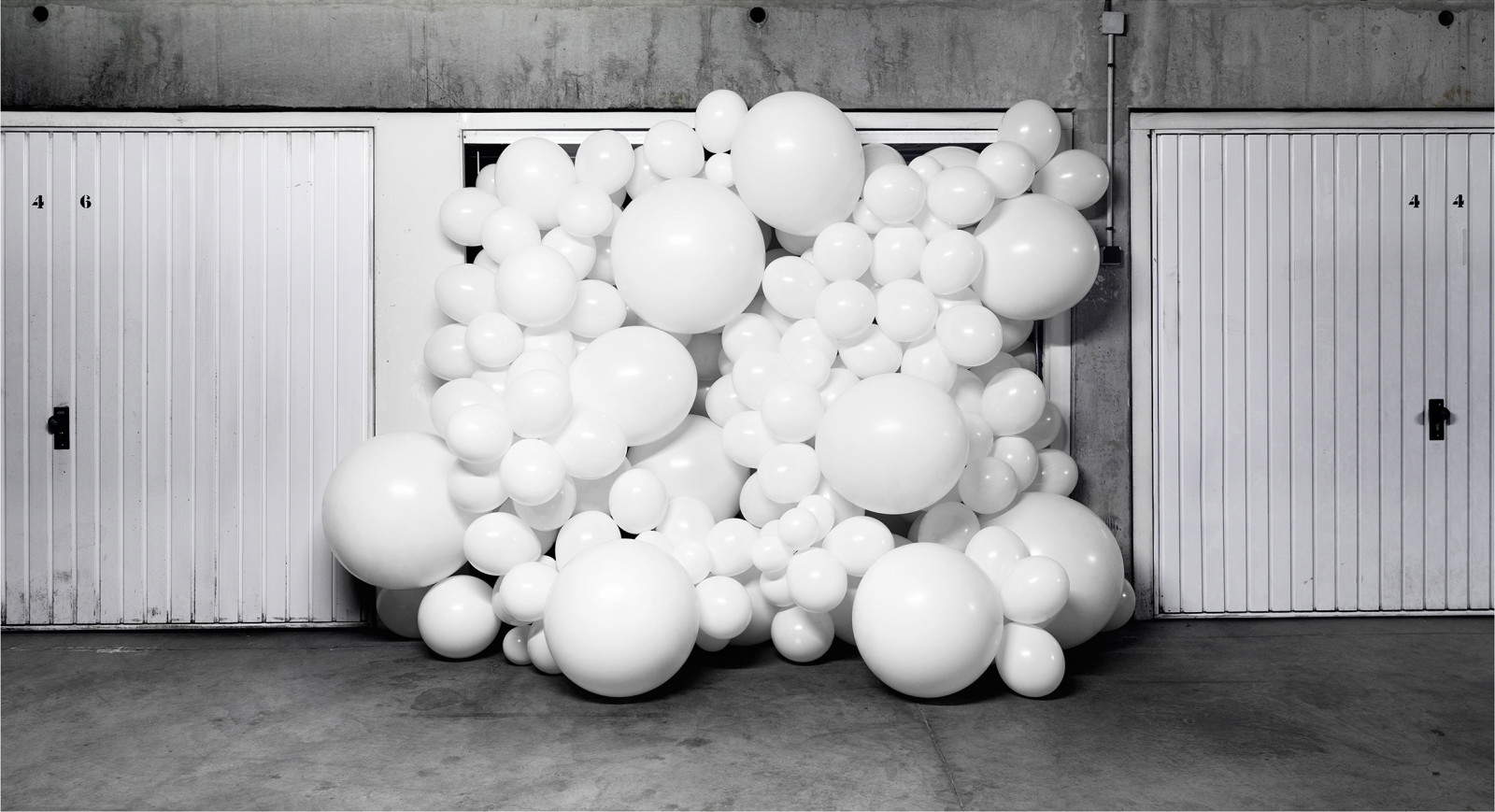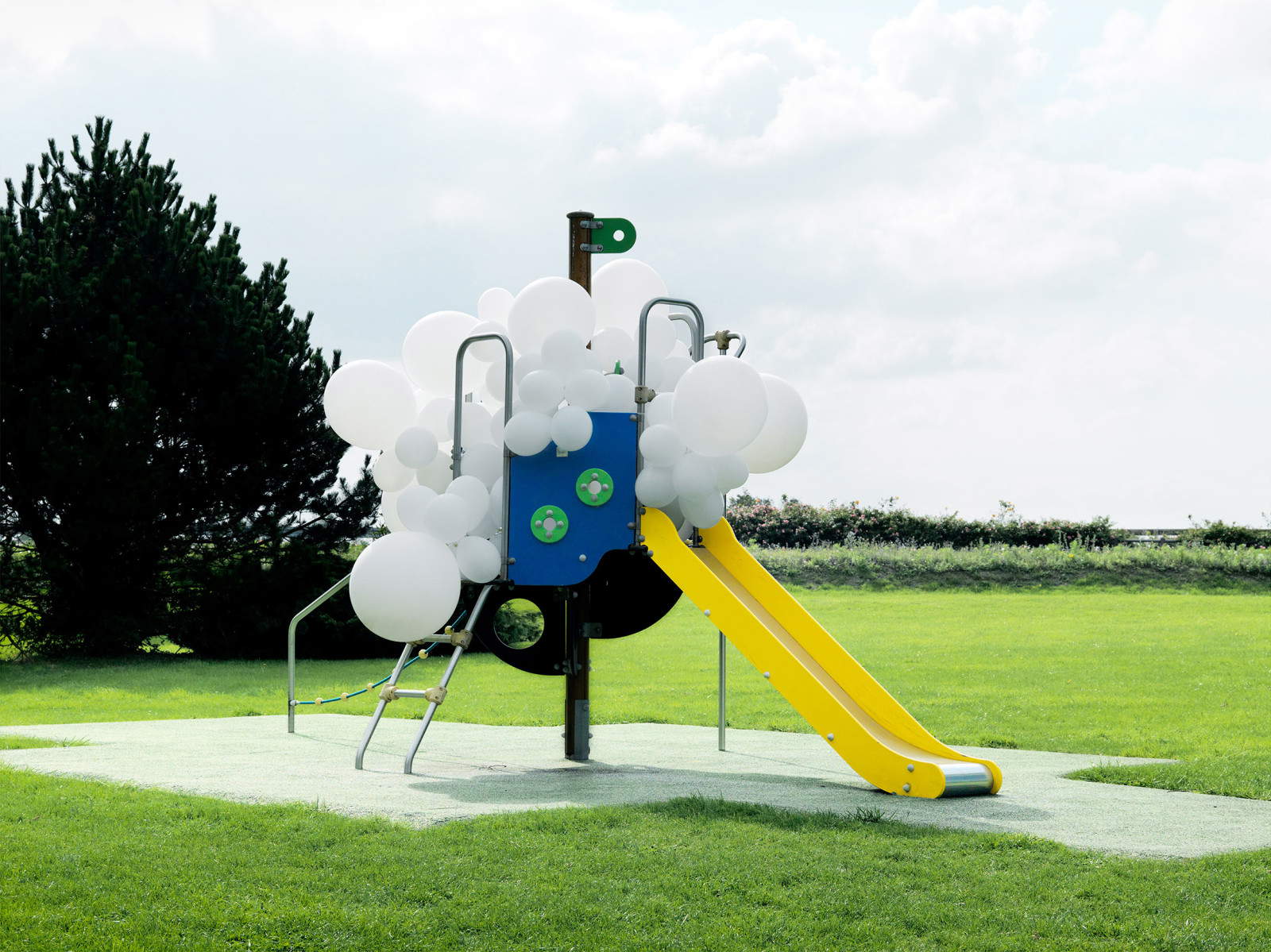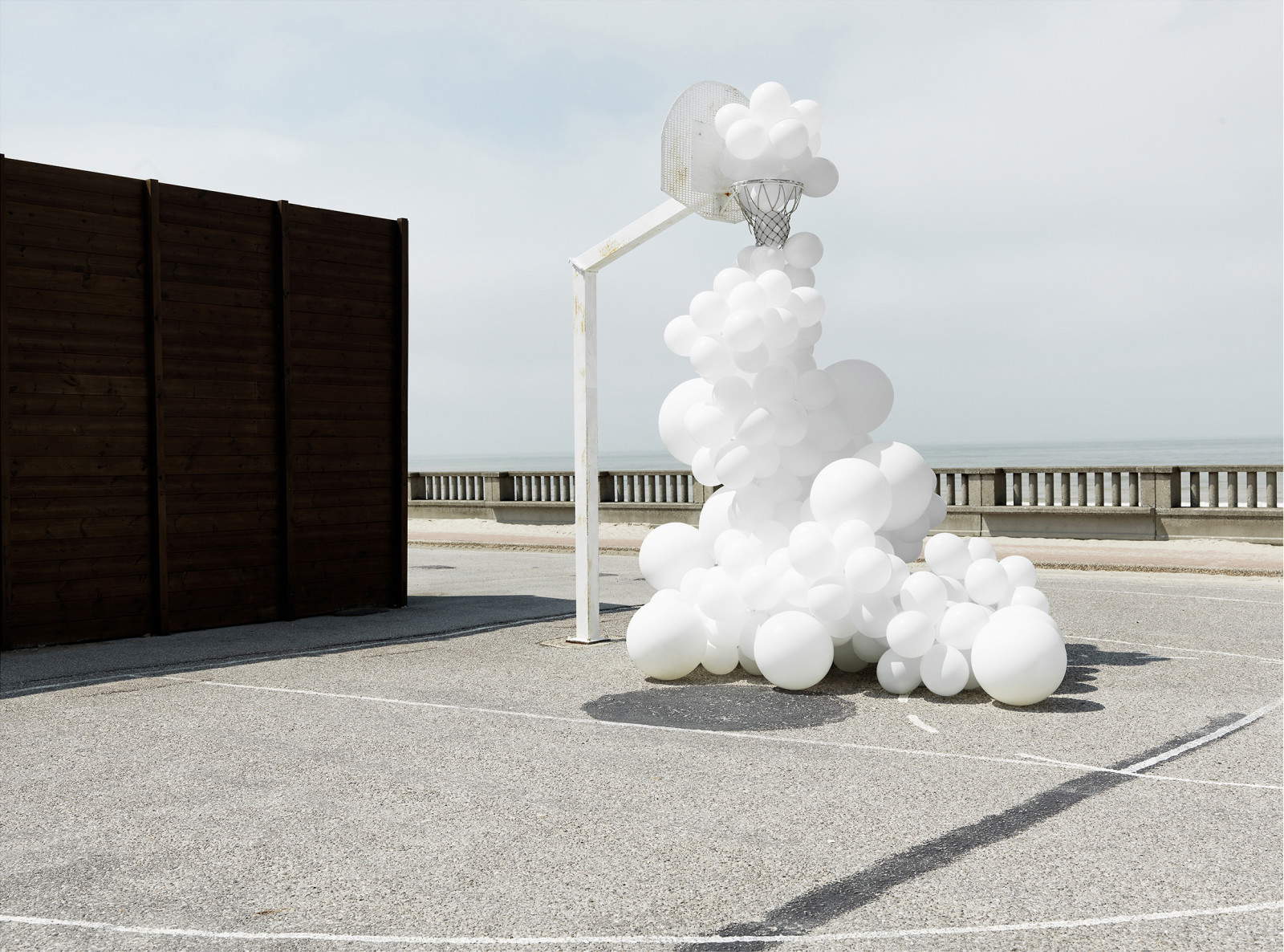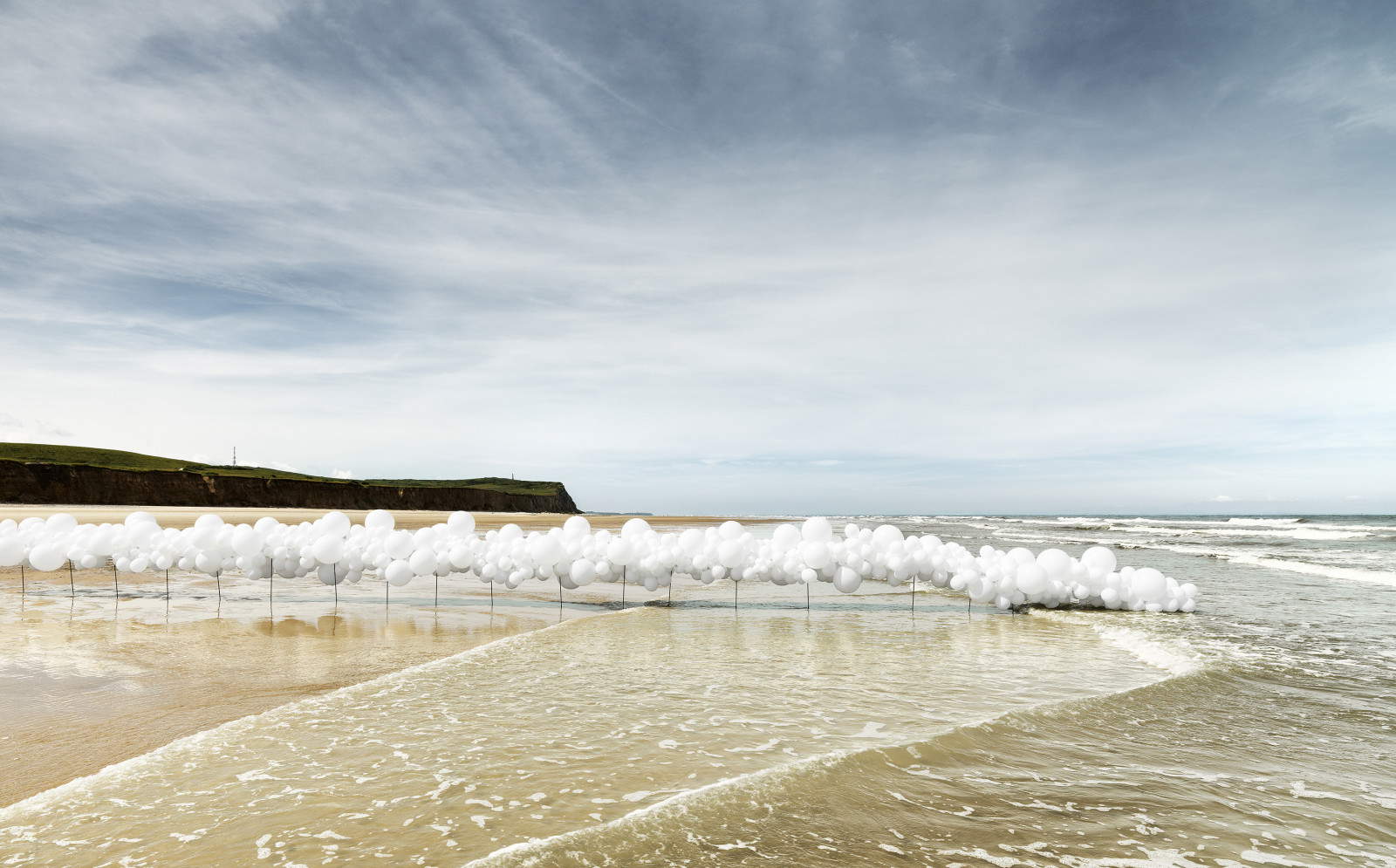by Redazione , published on 25/08/2020
Categories: Contemporary art
/ Disclaimer
French artist Charles Pétillon, a photographer, is best known to the general public for his installations created with hundreds (and sometimes thousands) of white balloons.
Charles Pétillon (Paris, 1973) is a photographer who is highly regarded by the general public, especially for his installations made of large clouds of white balloons, which the artist has taken to different contexts: the most famous cloud is probably the one that Pétillon installed in 2015 at London’s Covent Garden. But there are many clouds that the artist has created and photographed, carefully following each stage of the installation, then capturing the white balloons, appropriately assembled by him and his staff, in his photographs. Beaches, forests, country houses, suburban fields-these are some of the theaters that have seen his clouds transit.
“These balloon invasions,” the artist explains, “are metaphors. They are meant to change the point of view on what we frequent every day but pay no attention to. It is our gaze that I would like to enliven, allowing the shift from a practical perception to a visual emotion.” So here Souvenirs de famille recalls childhood memories, Play Station declines the theme of play and the disagreement between modern video games and ancient street games, Mutations refers to the molecular structure of DNA.
His most famous installation, the one in Covent Garden mentioned earlier, is called Heart Beat and, in the author’s own words, is “an immersive experience: the viewer is part of the installation at the very moment he is part of the Covent Garden covered market. He also experiences and confronts the memory of this space. The heartbeats simulated by the lights allow one to become aware of the memory of the place. With each beat, the abyss of time is perceived. The multitude of balloons allows for a visual overload. We cannot perceive the installation as a whole, and this echoes the temporality of this space. In fact, the immensity of the installation brings us back to the depth of time and space.”
A self-taught artist, Pétillon began taking photographs at the age of eleven, when he received his first camera as a gift. Since then he has continued to shoot, with a style always devoted to essentiality and attention to detail. And since 2011, to photography, he began to combine his installations of balloons, always strictly white, each time declined according to different forms, while they are made to dialogue with the environment. His latest exhibition closed the day before yesterday, on August 23 (it had begun on June 18) at the Collegiate Church of Saint-Pierre-le-Puellier in Orléans, central France (where, by the way, the artist has made another of his installations). Here, Pétillon exhibited some photographs taken on and around the Loire, the great river that bathes this land.
Below are some images of his achievements.
 |
| Charles Pétillon, Souvenirs de famille (2011) |
 |
| Charles Pétillon, Igloo 2 (2013) |
 |
| Charles Pétillon, Co2 (2015) |
 |
| Charles Pétillon, Mutations 2 (2016) |
 |
| Charles Pétillon, Vae Victis (2016) |
 |
| Charles Pétillon, Play Station 1 (2011) |
 |
| Charles Pétillon, Play Station 2 (2011) |
 |
| Charles Pétillon, Heart Beat (2015) |
 |
| Charles Pétillon, 33 km (2016) |
 |
| The exhibition at the collegiate church of Saint-Pierre-le-Puellier in Orléans |
 |
| Charles Pétillon, the artist who creates installations with hundreds of white balloons |
Warning: the translation into English of the original Italian article was created using automatic tools.
We undertake to review all articles, but we do not guarantee the total absence of inaccuracies in the translation due to the program. You can
find the original by clicking on the ITA button. If you find any mistake,please contact us.










